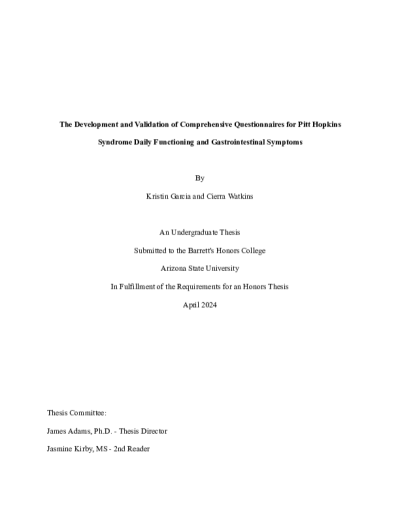Filtering by
- Creators: School of Life Sciences
- Member of: Barrett, The Honors College Thesis/Creative Project Collection
Birds have been found to possess naturally high blood glucose levels compared to other mammals of similar sizes (Braun and Sweazea, 2008). Additionally, birds utilize lipids as their primary source of fuel yet continue to have high resting blood glucose levels (Landys et al., 2005). It has been hypothesized that the underlying cause of this is a preference to oxidize fatty acids rather than carbohydrates, which results in the production of glycerol (a precursor to gluconeogenesis). Thus, the role of gluconeogenesis in blood glucose regulation in birds was examined in this study. We captured seven mourning doves (Zenaida macroura) in Tempe, Arizona, and allowed them to acclimate to their new environment for two weeks. One bird was released prior to experimentation due to poor acclimation. Over a course of six weeks following this acclimation period, birds were administered either metformin (an inhibitor of gluconeogenesis that is commonly used in type 2 diabetes patients) at 150 mg/kg or 300 mg/kg, a compound called DAB (1,4-dideoxy-1,4-imino-D-arabinitol) at a dose of 2.5 mg/kg that acts to inhibit glycogenolysis (a potential compensatory mechanism that elevates blood sugar), or a control (water). Blood draws were conducted at 0, 5, and 15 minutes following each treatment. In this crossover design study, each bird received one treatment each week. In the first phase of this study, Kreisler et al. found that 150 mg/kg metformin significantly increased blood glucose whereas 300 mg/kg metformin did not increase over two hours. These observations held true in the current acute study as well. Additionally, Kreisler et al. observed no effect of METDAB (150 mg/kg metformin and 2.5 mg/kg DAB) on blood glucose compared to the control, indicating that DAB effectively inhibited glycogenolysis induced by metformin. Contrary to this, the current study observed a significant increase (p<0.05) in blood glucose over 15 minutes after administration of METDAB, suggesting that DAB does not act within a shorter period of time. While metformin increases blood glucose within only 5 minutes, the longer timeframe with which DAB acts was not sufficient to prevent the increase. Additionally, when administered alone, DAB had no effect on blood glucose concentrations over a 2-hour period. This suggests that glycogenolysis is most likely not activated in healthy mourning doves under fed conditions and that gluconeogenesis plausibly plays a much larger role.
Birds naturally have high circulating blood glucose concentrations compared to other vertebrates. Several mechanisms have been proposed to explain their high levels including the lack of an insulin responsive glucose transport protein, higher circulating glucagon concentrations, as well as a reliance on lipid oxidation to fuel the high metabolic demands for flight. We suspected the latter may result in the production of the gluconeogenic precursor, glycerol. Therefore, we examined the hypothesis that gluconeogenesis, via glycerol, contributes to the naturally high glucose concentrations in birds (Madiraju et al., 2014). We captured seven mourning doves, Zenaida macroura, in Tempe, AZ, USA and acclimated the birds to captivity for two weeks. In this crossover design study, doves received either an oral inhibitor of gluconeogenesis (150 or 300 mg/kg metformin) or water (50 ul) each week. We measured blood glucose concentrations using a glucometer at baseline, 30, 60 and 120 minutes following the oral dose. In contrast to mammals and chickens, 300 mg/kg metformin did not alter blood glucose (p>0.05) and 150 mg/kg metformin significantly increased blood glucose concentrations (p=0.043) compared to the oral bolus of water. To examine whether the low dose of metformin stimulated glycogenolysis, thus causing the hyperglycemic effect, we administered the low dose of metformin along with an inhibitor of glycogenolysis, 2.5 mg/kg 1,4-dideoxy-1,4-imino-D-arabinitol (DAB), which prevented the hyperglycemic response (p>0.05 vs. water). These data suggest that low doses of metformin activate glycogenolysis. It is possible that glycogenolysis is also activated at the higher dose, but glycogen may be depleted early on resulting in no measurable changes, given the present study design. In conclusion, and in contrast to the hypothesis, mourning doves may not rely on gluconeogenesis to maintain their naturally high blood glucose concentrations under fed conditions, although further studies with more specific gluconeogenic antagonists and under fasted conditions may be needed to confirm these findings.


